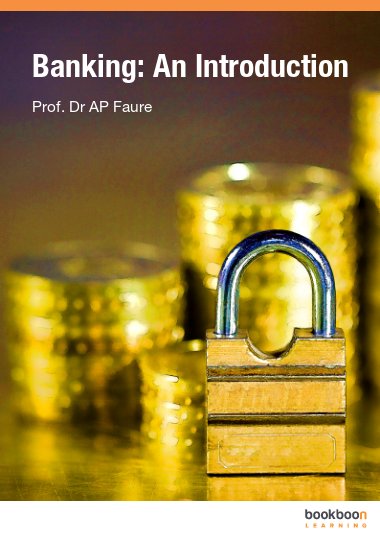This book presents an introduction to private sector banking (as opposed to central banking). Banks are at the very centre of the financial system. They act as intermediaries between all the four sectors of the economy) and all other financial intermediaries. They are also at the very centre of the money market, the market for short-term debt and deposits, marketable and non-marketable, and the interbank markets. They also create the all-important payments system. The banks are unique in that they are able to create new money (by new bank lending), and this is so because money is whatever is generally accepted as the means of payments / medium of exchange: bank deposits (notes and coins make up a minor part of the money stock). Because of this, and other reasons (moral hazard, for example) banks are also inherently unstable, and require robust regulation and supervision. Also because of this, banks are the target of monetary policy implementation.

الوصف
المحتوى
- Essence of banking
- Learning outcomes
- Introduction
- The financial system
- Principles of banking
- The balance sheet of a bank
- Bibliography
- Money creation
- Learning objectives
- Introduction
- What is money?
- Measures of money
- Monetary banking institutions
- Money and its role
- Uniqueness of banks
- The cash reserve requirement
- Money creation does not start with a bank receiving a deposit
- Money creation is not dependent on a cash reserve requirement
- Is “money supply” a misnomer?
- The money identity and the creation of money
- Role of the central bank in money creation
- How does a central bank maintain a bank liquidity shortage?
- Bibliography
- Risk in banking
- Learning outcomes
- Introduction
- The concept of risk
- Interest rate risk
- Market risk
- Liquidity risk
- Credit risk
- Currency risk
- Counterparty risk
- Operational risk
- Bibliography
- Bank models & prudential requirements
- Learning outcomes
- Introduction
- Bank models
- Rationale, objectives & principles of regulation
- Prudential requirements
- Bibliography
- Endnotes
